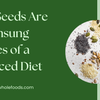Potato Starch: Health Benefits and Practical Uses
- by S R
Potato Starch: Health Benefits and Practical Uses
Potato starch is a versatile, naturally derived ingredient that has been used for centuries in both cooking and industry. Extracted from the tubers of potatoes, it is a fine, white powder with unique properties that make it valuable in the kitchen and beyond. Beyond its functional uses, potato starch also offers several nutritional benefits, making it a useful addition to a balanced diet.
Nutritional Benefits of Potato Starch
While potato starch is primarily a source of carbohydrates, it has some unique properties:
- Resistant starch content: Potato starch contains a type of carbohydrate called resistant starch, which is not fully digested in the small intestine. Resistant starch acts as a prebiotic, feeding beneficial gut bacteria and supporting digestive health.
- Low in fat and protein: Potato starch is naturally low in fat and protein, making it a neutral addition to a variety of dishes.
- Gluten-free: For individuals with celiac disease or gluten intolerance, potato starch is an excellent gluten-free thickening or baking alternative.
- Supports blood sugar control: The resistant starch in potato starch is digested slowly, helping to maintain more stable blood sugar levels compared to regular starches.
Culinary Uses of Potato Starch
Potato starch is highly versatile in cooking due to its neutral flavor and unique thickening properties:
- Thickening agent: Potato starch can be used to thicken soups, sauces, gravies, and pie fillings. It forms a smooth, glossy texture without altering the flavour of the dish.
- Baking and gluten-free cooking: It can be used in combination with other flours such as tapioca flour and millet flour. To make gluten-free bread, pancakes, muffins, and cakes, giving baked goods a light, tender texture.
- Crisping and coating: Potato starch is excellent for coating vegetables, tofu, or meats before frying or baking, creating a crispy outer layer.
- Pasta and noodles: Some gluten-free noodles and pasta recipes use potato starch to improve elasticity and chewiness.
Other Uses of Potato Starch
- Beyond cooking, potato starch is used in several household and industrial applications:
- Laundry and fabric care: Potato starch can stiffen fabrics and act as a natural ironing aid.
- Cosmetic and skin care: It is sometimes included in powders and lotions for its absorbent and soothing properties.
- Crafts and adhesives: Potato starch is used in paper and glue products due to its binding properties.
Tips for Using Potato Starch in Cooking
- Mix with cold water first: To prevent clumping, dissolve potato starch in a small amount of cold water before adding it to hot liquids.
- Avoid overcooking: Potato starch thickens quickly and can break down if boiled for too long, so add it near the end of cooking.
- Combine with other flours: For gluten-free baking, combine potato starch with almond flour, rice flour, or oat flour to improve texture and moisture.
Conclusion
Potato starch is a multifunctional, gluten-free ingredient with a range of culinary and household applications. Its resistant starch content supports gut health and blood sugar management, while its neutral flavour and thickening properties make it ideal for cooking and baking. Whether you’re thickening a sauce, baking gluten-free treats, or creating a crispy coating for vegetables, potato starch is a versatile tool in any kitchen, combining health benefits with practical uses.
If you're looking for some gluten free recipes check out our website for some easy homemade recipes.





